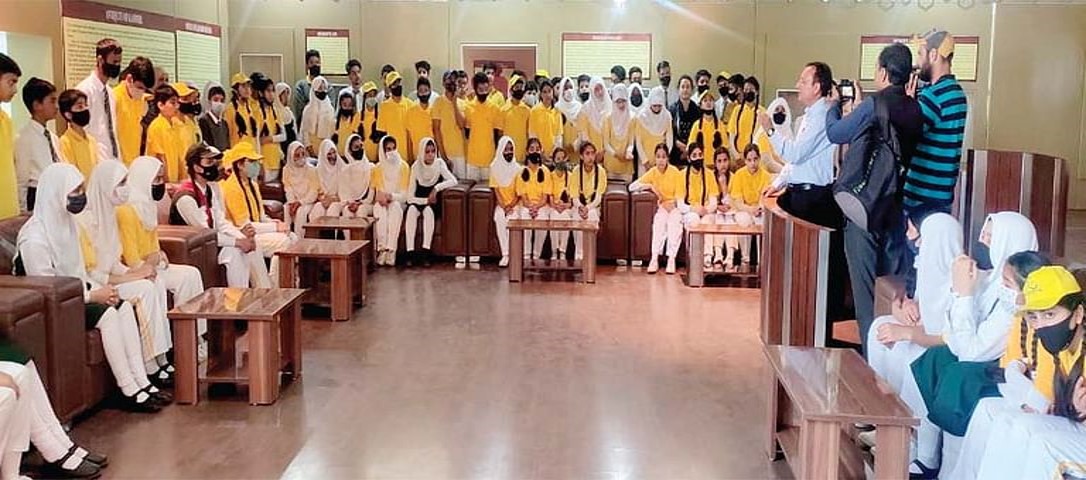On the 18th April, this year, the international monuments and sites day better known as world heritage day, like other places, was also observed here in Jammu and Kashmir. The concerned government organisations (which included the cultural and tourism departments) Museums, cultural organisations and educational institutions held functions to highlight scope and significance of the heritage wealth of Jammu and Kashmir. In this connection major functions were held at Srinagar and Jammu Museums, where special heritage exhibitions were held to commemorate the event.
Jammu and Kashmir showcases a wonderful heritage of built and natural stuff. And most of the heritage sites are also well maintained and well preserved. But most of the sites are still to be explored for promotion of heritage tourism. In fact, we are still involved in preservation and conservation process of our cultural heritage and have not yet deliberated on its development and promotion phase so that these sites could have been explored for the growing heritage tourism sector. Although natural heritage sites to some extent have been developed and explored for the scenic and adventure tourism, but the tourism potential of architectural and archaeological sites has not been realised and explored to its requisite extent. History records that in the colonial and Dogra era the foreign tourists were very much attracted towards the architectural and archaeological heritage of this land. Their travelogues and the local administrative reports of that period are witness to this fact. Lacs of tourists have been every year visiting the SPS Museum, and down streets of Srinagar city, Khanqah Shah Hamdan, Mosque and tomb of Madine Sahib, Sun temple Martand, Avantipura temples, and other monuments of this land located in the upper Jhelum valley.
Maharaja Pratap Singh is learnt to have been keeping an eye on the tourist flow of this land and on the facilities provided to them. He has been monitoring the flow of tourists to SPS Museum Srinagar and it was the duty of the Superintendent of the museum to submit the hand written report to Maharaja Bhadur on daily basis about the number of foreign visitors to have visited the museum. Similarly the tourist flow to the monuments was also monitored on seasonal basis. Till eighties, the state museum and archaeological monuments had been considered the main heritage tourism destinations of this land. Due to uncertain circumstances the flow of foreign tourists to Kashmir dropped considerably.
In fact archaeological works even in the turmoil period continued here and number of archaeological sites and artifacts were discovered and notified here. But to re-commission these monuments for the heritage tourism did not pick up so fast. There may be security reasons as well but still most of the sites and monuments have not been developed and promoted to the extent that those would be become again attractive destinations for tourists. There are several such archaeological and architectural sites found in Jammu and Kashmir which could have become the tourist destinations. The world famous Neolithic site at Burzhama, Buddhist site at Harwan, Kanishahr at Parahaspura, Sun temple at Martand, Buddhist site and Fort of Akhnoor, Mubarkmandi complex and Amar Mahal palace Jammu had got every potential to attract tourists.
But most of these sites lack the basic archaeological and tourist infrastructure. There exists no site museum at any of archaeological site of this land. The priceless artifacts of world famous Neolithic archaeological site of Burzhama since decades are housed in the lockers of Archaeological survey of India at Purana Qilla New Delhi. The proposal of having a Neolithic heritage museum at Burzhama Neolithic site has not matured till date. The fate of thousands of archaeological artifacts, which include Paleolithic and Neolithic stone and bone tools excavated decades back from this site, is still unknown. We do not know if these artifacts exhibited anywhere. At least we can say that the historic Srinagar museum does not exhibit a single artifact of the Burzhama site. Similar is the tale of world class Kushana period terracotta archaeological site of Harwan and Akhnoor. The tiles exhumed from these sites are housed in the strong rooms of ASI. (But still fortunately few of terracotta tiles and terracotta heads exhumed from these sites can be seen at Srinagar and Jammu museums). Several of wonderful archaeological monuments have become inaccessible to tourists and general public in view of citing security reasons. Scores of terracotta sites excavated from the length and breadth of this valley have also turned inaccessible. The tile pavement which once was visible at these sites has been dumped with soil and no remains of these glorious pavements have been left open for the tourists. The proposal of setting of natural history museum in the old museum complex at Srinagar with the already available prized collection of stuff birds and animals, geological and mineral collections has also gathered dust.
Usually the concerned departments and administration is held responsible for such lapses but I do not see any fault of these institutions. The cultural and heritage organisations and institutions involved in preservation and conservation of cultural assists have been doing a commendable job, but there is the lack of more stable and sustainable heritage policy. Government shall formulate such a heritage promotion policy which shall think beyond the preservation and conservation phase and focus on promotion of heritage tourism of architectural and archaeological sites of this land. Sometimes there has been cultural polices but surprisingly these polices have been changing with the change in guard. In fact there is a very vast scope for heritage tourism promotion, provided a stable and concrete heritage promotion policy is formulated in consultation with the heritage experts. On the other hand the tourism authorities shall also think beyond the traditional tourist sites of Gulmarg and Pahalgham and also deliberate on means to promote and explore the taste of heritage tourism.
Courtesy : Iqbal Ahmad

